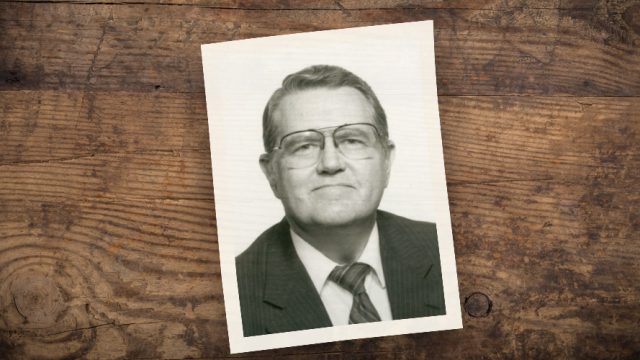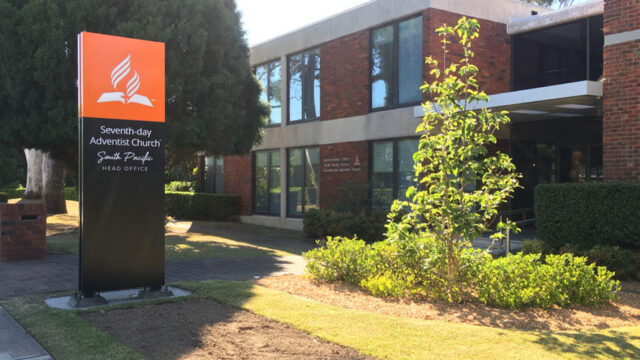In good times, bad times, and forevermore

Psalm 23 has encouraged the faith community for millennia to trust God. Indeed, Psalm 23 teaches that there is no point in our lives in which God ceases to be our Shepherd.
The Andrews Study Bible outlines the chiastic structure of this chapter by sharing five points that all start with the letter “p.”
A Presence (verse 1)
B Provision (verses 2-3a)
C Paths (righteousness and death, verses 3b-4a)
B1 Provision (verses 4b-6a)
A1 Presence (verse 6b)1
This structure helps us understand the message of the chapter. The presence of the shepherd is seen not only in good times as indicated by both verses 1 and 6, but all the more in verse 4, in which the sheep walk through the valley of the shadow of death. The psalmist boldly says, “I will fear no evil, for you are with me; your rod and your staff, they comfort me” (verse 4).2 Considering the beautiful chiastic structure, I suggest a three-point outline that assures us of the Shepherd’s presence.
In Good Times
One can easily notice the positive note of the passage when David writes, “He makes me lie down in green pastures, he leads me beside quiet waters, he refreshes my soul. He guides me along the right paths for his name’s sake” (verses 2, 3). David is essentially saying, “The Lord is my Shepherd in good times.”
When David killed a lion and a bear that threatened his flock (1 Sam. 17:36), when he won the victory over Goliath (1 Sam. 17:51), when he was victorious over all his enemies, the Lord was his Shepherd.
The same is true with us. In our victories, our successes, our times of peace and security, the Lord is our Shepherd. Before the pandemic, when we could freely offer handshakes and hugs with our colleagues, friends, and family members, the Lord was our Shepherd. He is our Shepherd in good times.
In Bad Times
The tone of the chapter turns dark with these words: “Even though I walk through the darkest valley” (verse 4). Death is never welcome. When David’s life was in danger, when Saul and his son were chasing him, threatening his life, David could say, “The Lord is my Shepherd in bad times.” Since God was with him, he could say, “I will fear no evil, for you are with me.” The Hebrew word for “darkest valley” means “deep darkness”3 or “impenetrable gloom.”4
COVID-19 has brought people in all walks of life to a period of loneliness. People suffer alone; they die alone; their funerals are attended by a fraction of those who loved and respected them. This experience has brought fear to the hearts of many, even Christians.
But even in this situation, while we walk in the valley of the deep darkness, we can say with David, “We will fear no evil, for you are with us.” Even in dark moments of our lives, the Lord is our Shepherd.
Jesus went through impenetrable gloom, deep darkness, when He died. When Jesus suffered on the cross He cried, “My God, my God, why have you forsaken Me?” (Ps. 22:1). He went through it victoriously. Thus we can be assured that we have a Shepherd who can guide us through the shadow of death, deep darkness, and impenetrable gloom. Although we often cannot see the light at the end of a dark tunnel, Jesus, our Shepherd, is lovingly guiding us. He knows the way.
Our Shepherd Forevermore
The positive is emphasized once again as David looks to the future. “I will dwell in the house of the Lord forever” (Ps. 23:6). Just as suffering is part of our human experience, we have the promise of a heavenly home, where there will be no more death, no more tears, no more pain. We will be with the Shepherd forevermore.
John the revelator may have had Psalm 23 in mind when he saw Jesus as both Lamb and Shepherd leading the redeemed who came from great tribulation to the living fountains of waters, where “God will wipe away every tear from their eyes” (Rev. 7:17).
A Shepherd for All Seasons
Since we have a loving Shepherd in good times, in bad times, and forever more, we can say with David, “I will fear no evil, for you are with me.” Matthew Henry said, “Death is a king of terrors, but not to the sheep of Christ.”5
1Jon. L Dybdahl, ed., Andrews Study Bible (Berrien Springs, Mich.: Andrews University Press, 2010), p. 688.
2 Bible texts are from the Holy Bible, New International Version. Copyright ã 1973, 1978, 1984, 2011 by Biblica, Inc. Used by permission. All rights reserved worldwide.
3 The Interlinear New International Version Hebrew-English Bible, p. 369.
4 “צַלְמָ֫וֶת,” HALOT, 3:1029, accordance.bible/link/read/HALOT#15852
5 Matthew Henry, Commentary on the Whole Bible (Unabridged), Accordance electronic ed., 6 vols. (Altamonte Springs: OakTree Software, 2004), paragraph 14193, accordance.bible/link/read/Henry_Commentary#14193.








